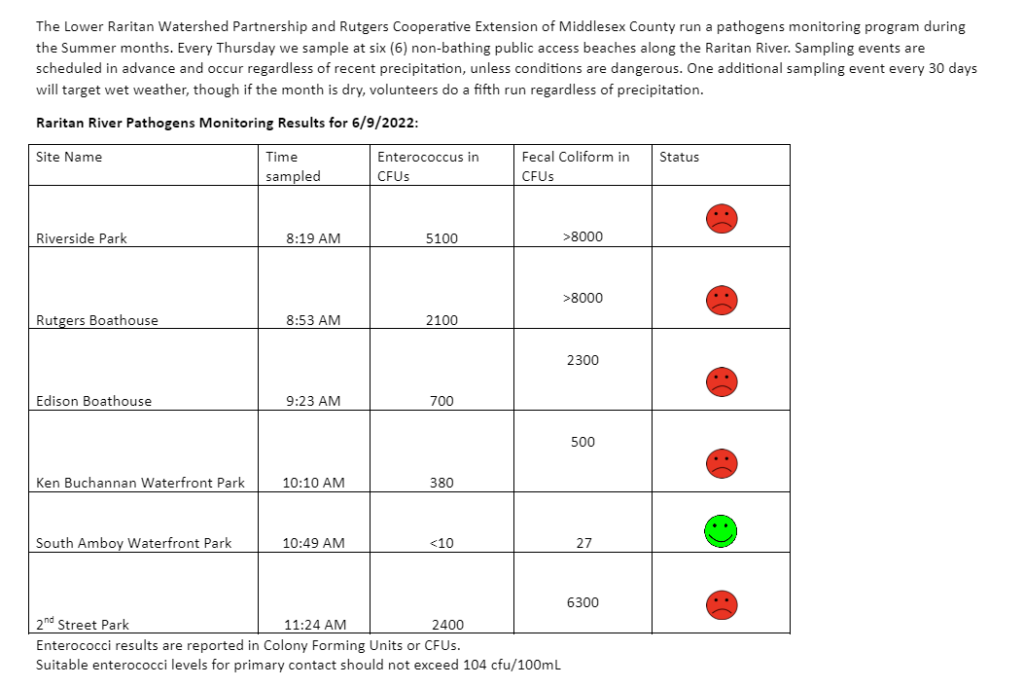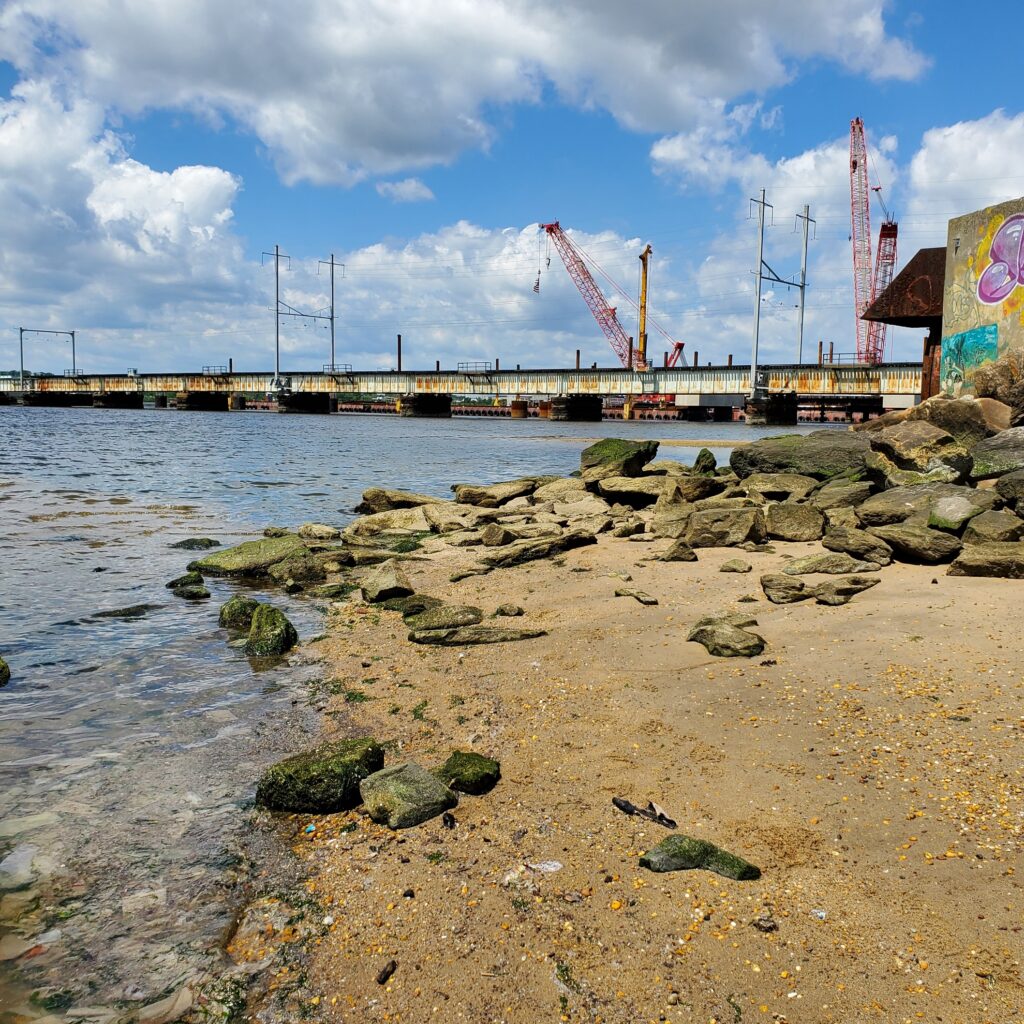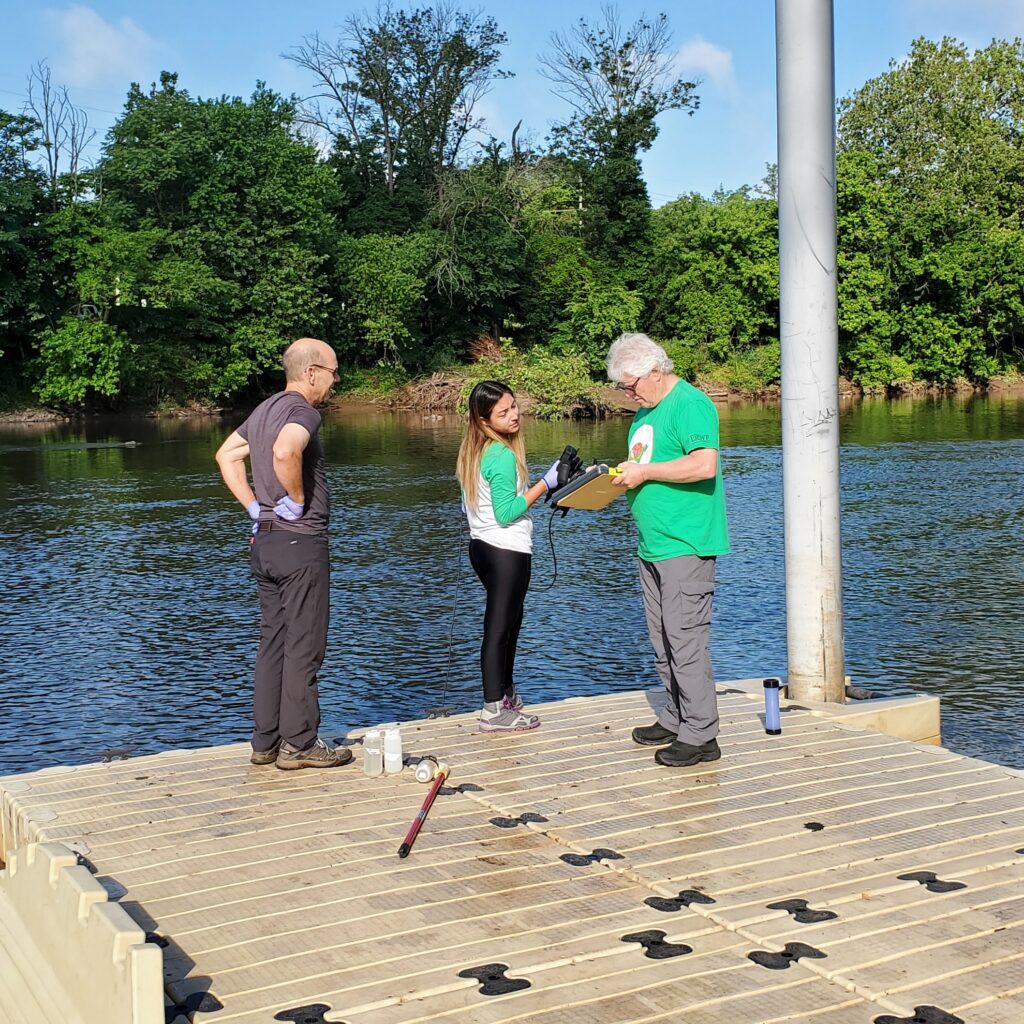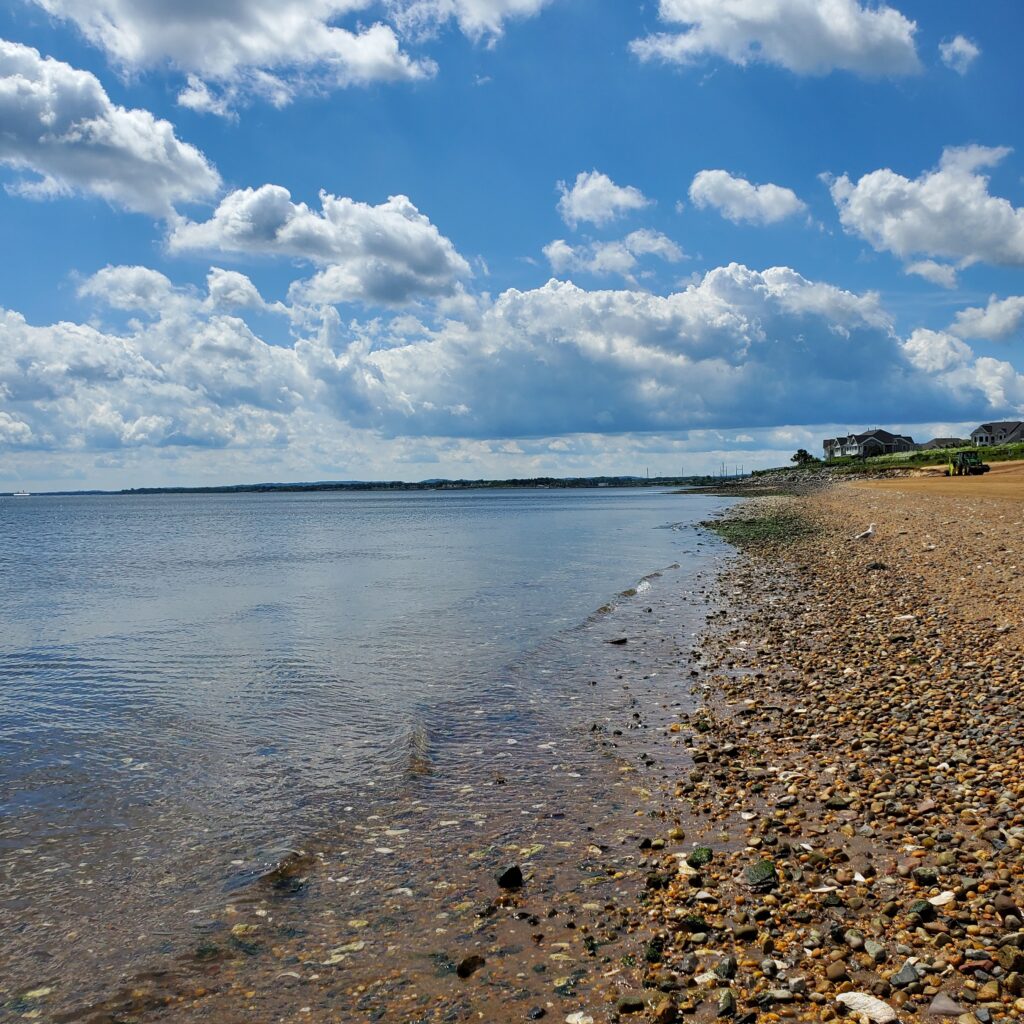6.9.2022 Raritan River Pathogens Results
With 0.83 inches of rain on Thursday morning June 9, you can probably guess the water quality vibes! High Enterococcus levels at almost all our pathogens monitoring sites this week (read about the exception below) means Raritan River lovers should be wary of engaging in waterfront activities this weekend.

Our Perth Amboy site was especially gross. Water Quality monitoring after heavy rains near combined sewer overflows (CSOs) is never pleasant. Look closely at the waterline in the photo below. What you see is several inches of pulverized toilet paper, disposable wipes, and poo defining the water’s edge at our 2nd Street Park Perth Amboy site. There was active discharge of sanitary sewage from the CSO, the pipe in the middle right of the image. Any guesses as to the dominant odors?
Despite the yuck factor, it was a GORGEOUS day to get out for some sampling. Huge thanks to our crackerjack team including the LRWP’s Community Outreach Project Manager Jocelyn Palomino, and our volunteer monitors Andrew and Frank pictured below.
Our South Amboy site was especially beautiful yesterday – the water was CLEAR, reflecting big puffy clouds. Our South Amboy numbers were below the EPA threshold for Enterococcus, with low presence of fecal coliform as well.
Enterococci results are reported in Colony Forming Units or CFUs. Suitable levels for primary contact should not exceed 104 cfu/100mL. Pathogens/Enterococci levels are used as indicators of the possible presence of disease-causing bacteria in recreational waters. Such pathogens may pose health risks to people fishing and swimming in a water body. Sources of bacteria include Combined Sewer Overflows (CSOs), improperly functioning wastewater treatment plants, stormwater runoff, leaking septic systems, animal carcasses, and runoff from manure storage areas.
Huge thanks to our partners: Rutgers Cooperative Extension of Middlesex County and the New England Interstate Water Pollution Control Commission.



